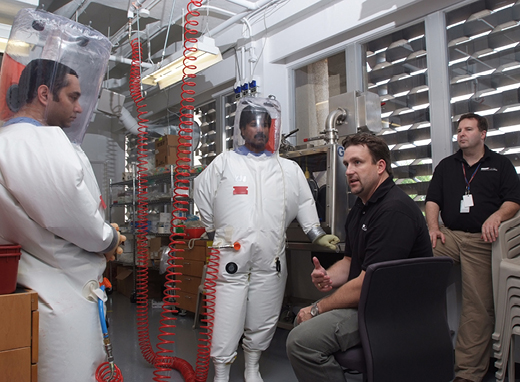Sean Kaufman’s job takes him all over the country and around the world. Though it may sound glamorous, his job is vital to protecting researchers who work with deadly diseases in biosafety laboratories.
These high-tech, highly secure facilities handle viruses such as Ebola, Marburg, and Lassa fever. To minimize the risk of infection, researchers must master a multitude of safety measures and operating standards. There’s no better way to learn than through a hands-on training course in a mock biosafety level-4 (BSL-4) laboratory, says Kaufman. Here he wants trainees to make mistakes because there is little room for error in a real laboratory.
“You can learn about BSL emergencies from textbooks,” says Kaufman, “the same way you theoretically can learn to swim from a PowerPoint presentation. But the only real way to learn how to respond to BSL emergencies is by responding. Our program bridges the gap between knowing something and being able to do it quickly and with minimum risk.”
Kaufman designed the biosafety training course seven years ago after Ruth Berkelman, director of the Center for Public Health Preparedness and Research, received an NIH grant to create such a program. Berkelman tapped him for his expertise in human behavior and his affinity for working on infectious disease issues.
“Previously, training was behavior-based with little or no simulation training,” he says. “With hands-on training, we can move people from being novices, we can put them safely in settings of a laboratory emergency, and overall, we can begin to create experts.”

